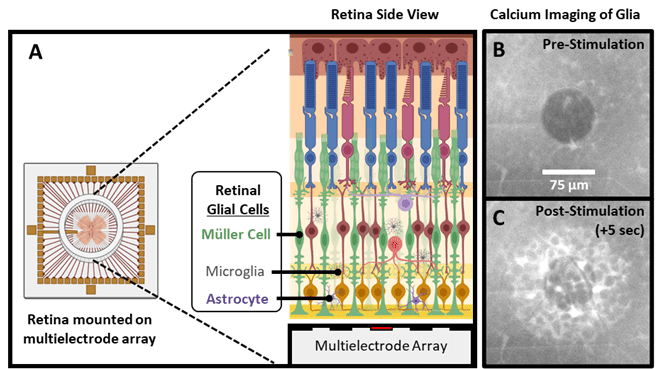
Figure 1. Platform for evaluating glial responses to electrical stimulation. (A) Retina is mounted on multielectrode array. Calcium imaging reveals glial activity (B) before and (C) after applying electrical stimulation through a transparent microelectrode, as observed in the ganglion cell layer.
Retinitis pigmentosa (RP) and age-related macular degeneration (AMD) are leading causes of blindness caused by the degeneration of photoreceptors in the retina. At present, there is no cure for these diseases. Bioelectronic retinal prostheses have demonstrated the capacity to restore partial vision to blind individuals via controlled electrical stimulation of the surviving retinal neurons. A growing body of evidence suggests that similar bioelectronic technologies can be utilized in a preventative manner as a therapy to slow down the rate of retinal degeneration, thereby prolonging the preservation of functional vision.
Contributing to these efforts to proactively slow down retinal degeneration, research led by Dr. Steven Walston seeks to understand the mechanisms through which bioelectronic stimulation can modulate the activity of glial cells in the retina. Glial cells are an important target to consider because they regulate several homeostatic processes critical for the health of retinal neurons. However, in comparison to retinal neurons, glial responses to electrical stimulation have been largely unexplored. To drive this research forward, Dr. Walston has developed a platform coupling calcium imaging and multielectrode arrays to interrogate the real-time spatiotemporal response of glial cells to electrical stimulation. Initial results demonstrate glial sensitivity to several parameters of stimulation with variable responses dynamics. Future work aims at correlating these responses with molecular diagnostics and improved retinal preservation to aid in the development of effective stimulation strategies that can slow down retinal degeneration caused by RP and AMD.